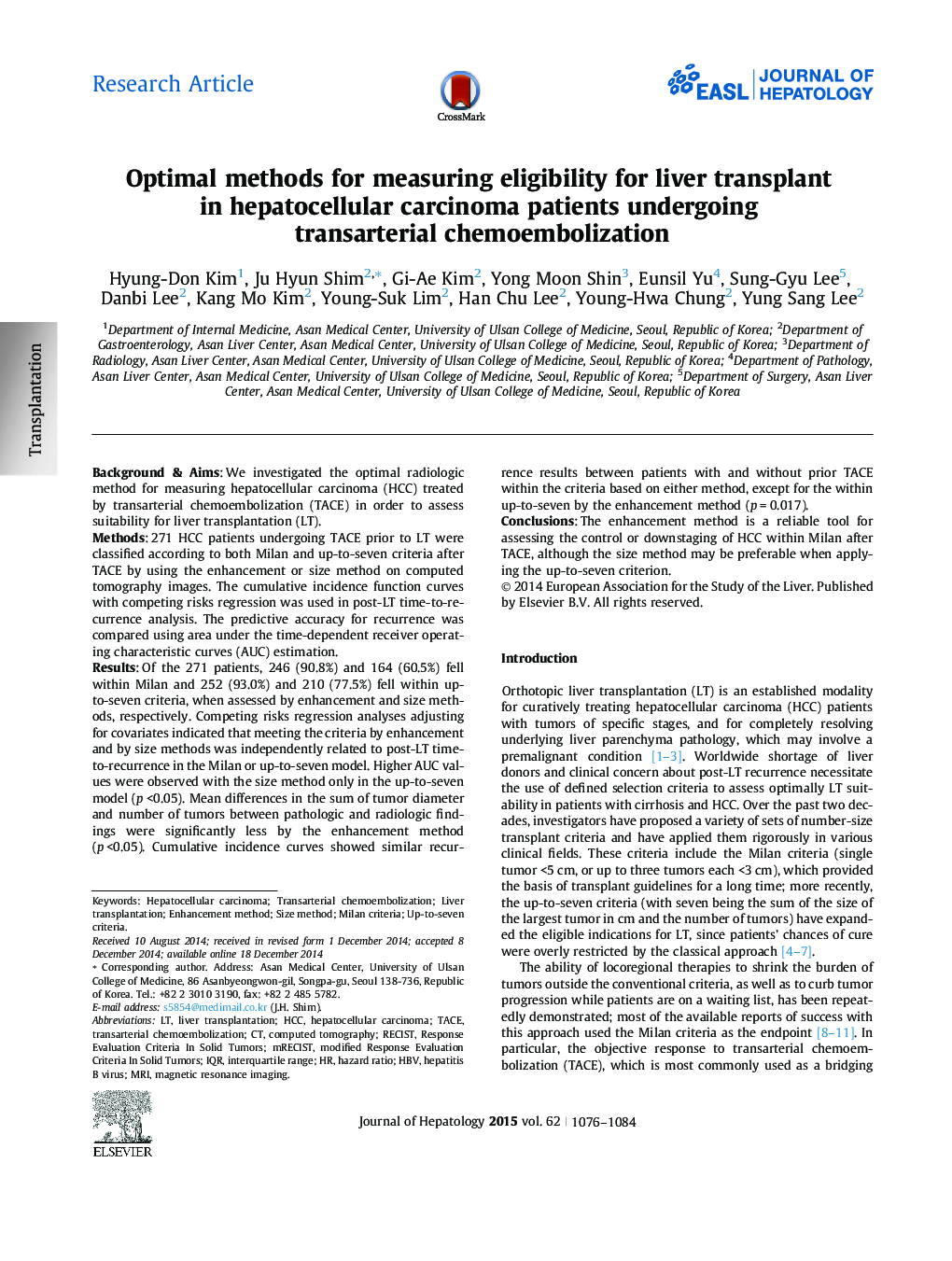| Article ID | Journal | Published Year | Pages | File Type |
|---|---|---|---|---|
| 6103029 | Journal of Hepatology | 2015 | 9 Pages |
Background & AimsWe investigated the optimal radiologic method for measuring hepatocellular carcinoma (HCC) treated by transarterial chemoembolization (TACE) in order to assess suitability for liver transplantation (LT).Methods271 HCC patients undergoing TACE prior to LT were classified according to both Milan and up-to-seven criteria after TACE by using the enhancement or size method on computed tomography images. The cumulative incidence function curves with competing risks regression was used in post-LT time-to-recurrence analysis. The predictive accuracy for recurrence was compared using area under the time-dependent receiver operating characteristic curves (AUC) estimation.ResultsOf the 271 patients, 246 (90.8%) and 164 (60.5%) fell within Milan and 252 (93.0%) and 210 (77.5%) fell within up-to-seven criteria, when assessed by enhancement and size methods, respectively. Competing risks regression analyses adjusting for covariates indicated that meeting the criteria by enhancement and by size methods was independently related to post-LT time-to-recurrence in the Milan or up-to-seven model. Higher AUC values were observed with the size method only in the up-to-seven model (p <0.05). Mean differences in the sum of tumor diameter and number of tumors between pathologic and radiologic findings were significantly less by the enhancement method (p <0.05). Cumulative incidence curves showed similar recurrence results between patients with and without prior TACE within the criteria based on either method, except for the within up-to-seven by the enhancement method (p = 0.017).ConclusionsThe enhancement method is a reliable tool for assessing the control or downstaging of HCC within Milan after TACE, although the size method may be preferable when applying the up-to-seven criterion.
